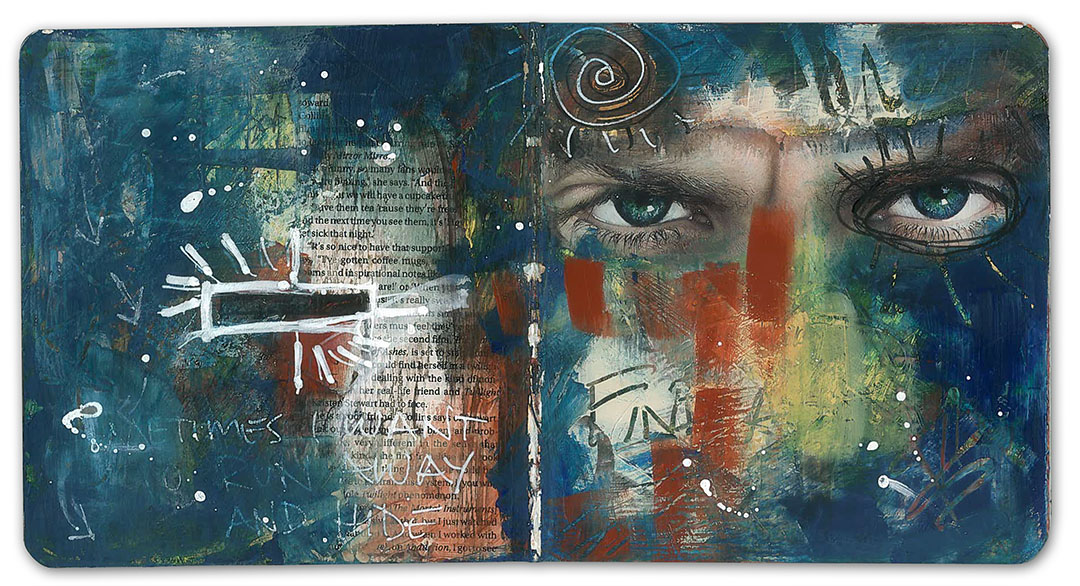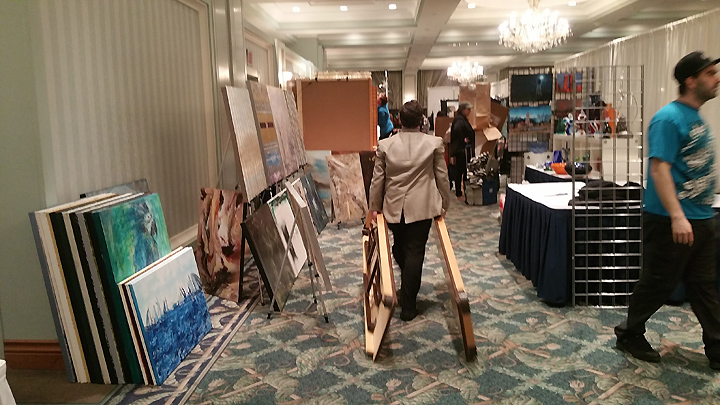 |
| Page from my art journal. I covered the page with chaos, then tried to calm it down.... |
 |
| Here's a shot of the page in it's initial stages. I think my feelings of anxiety come through pretty strongly... |
How is it that when I'm in the midst of an anxiety-induced meltdown I cannot remember this?
I have a few other things that help me out when I get completely stressed. They don't actually solve any of the problems, but they help my state of mind so I can look at things a bit more clearly. In then end I've still got the bills, the mess and the deadlines, but I'm in better shape to cope with it, and not end up curled up in a ball in front of the TV, paralyzed by panic.
Here's my list (which I suppose I should print out and tape to my studio wall...):
• Exercise. Going to the gym, getting out on my bike, even just a good, brisk walk helps my mental state enormously. Alone is best. Gives me time to think things over, or even forget about them temporarily... out of my head and into my body kind of thing. This is especially helpful if I'm angry about something. Quite literally, I'm working it out. This isn't always easy, since rainy damp weather can make me ache all over. But it really is time for me to get back into some sort of routine.
• Write. As in stream-of-conciousness, not always making sense kind of writing. I'm not a journal keeper, though I've tried many times over the years. Anyone who has worked their way through Julia Cameron's "The Artist's Way" will know that daily journaling is one of her key ideas. I've tried to do this as a regular thing, but I just can't seem to manage it. I know it helps... I should try to set aside time on a daily basis.
• Cook. My husband has come to realize that when he comes home to a meal that has required hours of preparation, or an abundance of baked goods cooling on the counter, that something has gone very wrong somewhere. Not sure what it is about cooking that I find soothing... maybe it's the repetitiveness of the chopping/stirring. The only issue is I then have to find the will power to not eat all the stuff I just made. In one sitting.
• Act like a child. Sometimes I will make stuff that goes directly into the garbage. It's incredibly juvenile, but I will draw pictures of people that piss me off, and give them horns, a tail, a whacked-out hairdo. Then put them in a boat being circled by sharks. Or draw them being eaten by a gigantic lizard. It's silly, but strangely, it helps.
One thing I just can't do is do nothing, which is what people will often tell me I need. Take a day off, they say. Just chill, they say. Nope. Can't do it. With everything that needs to get done sitting there staring at me, not doing anything just makes matters worse. I can't relax. I spend the time making mental lists and trying to figure out how to get everything done, and getting pissed off at myself for not being able to relax. I guess that's why holidays away are good... being away removes the need to get whatever it is I'm stressing about done RIGHT NOW. Maybe it's time to schedule a weekend somewhere calm and peaceful. Try to unwind a bit before the summer starts so I can enjoy it. And after this endless, freezing winter, I need summer. Kinda like right now.









